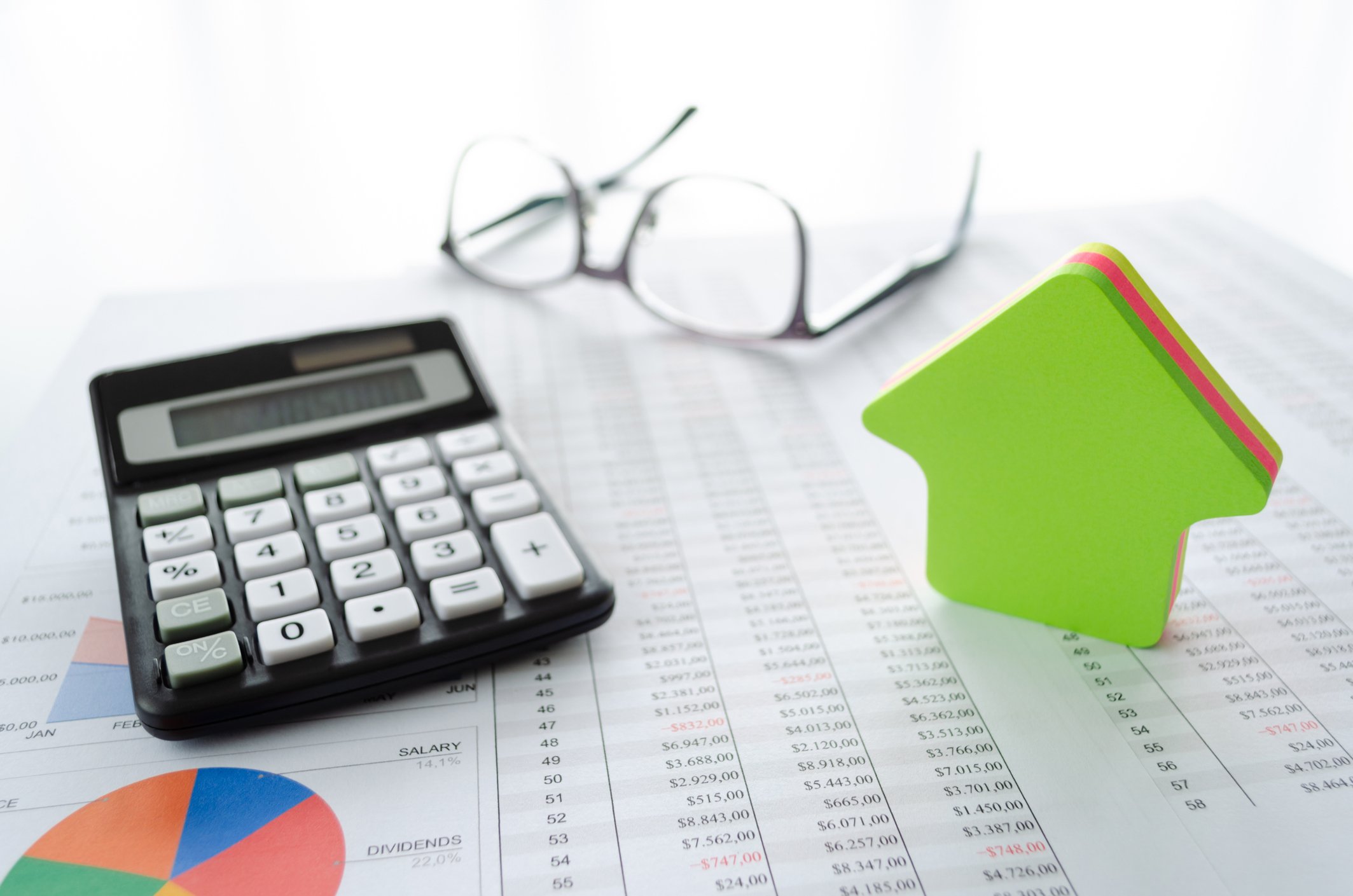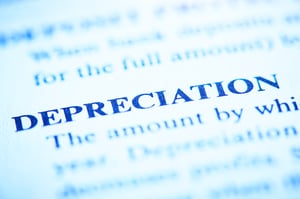Investing in rental property can be a great way to generate passive, recurring income and build wealth over the long term.
In order to maximize the returns on your real estate investment, it’s important to understand how the accounting works. That’s because the buck stops with you, and not your CPA or accountant.
Why Rental Property Accounting is Important
Investors who begin practicing good rental property accounting with their very first property will find it easier to scale up and grow a real estate investment portfolio.
In the same way that developing good habits shape your life in a positive way, rental property accounting helps you to generate the most profit from your rental properties and capture all of the tax benefits offered by the IRS.
There are several reasons why rental property accounting is important:
- Track investments on a property- and portfolio level to compare profitability between properties.
- Analyze income and expenses to add incremental revenues and strategically reduce operating costs.
- Monitor accounts payable to make sure that all obligations are paid on time and in full.
- Create financial statements such as a P&L and balance sheet to follow current year performance, plan for future investments, and adjust CapEx contributions.
- Generate tax-ready financial statements for your accountant or CPA when tax time rolls around.
Basic Principles of Rental Property Accounting
Let’s begin with a macro view of how rental property accounting works. Once you understand the basic principles, it will be much easier to accurately keep track of your income and expenses:
Banking
Create a bank account for each individual rental property, along with a debit card or credit card. This makes it easier to track transactions by property and avoids the risk of commingling your personal expenses with your business expenses.
Accounting System
Having a good accounting system in place reduces the risk that you’ll forget to report income, or over-report expenses, two mistakes that can get you in trouble with the IRS. Many real estate investors use a free online system like Stessa to automate income and expense tracking and generate personalized financial reports.
Cash vs Accrual Method
The cash method of accounting reports income at the time it is received and bills at the time they are paid. For example, if you deposit $2,000 in rent on June 1st and pay $1,500 in bills in the month of June, using cash accounting you have a profit of $500 for the month of June.
Accrual accounting reports income when the receivable invoice is generated (even if payment hasn’t been received) and expenses when the cost is incurred (but not yet paid for).
For example, if you bill the tenant for $2,000 in rent in June but the tenant doesn’t pay, you still have income and a receivable of $2,000 based on the accrual method. If you receive $1,500 in bills for the month but don’t actually pay them until July, you still have an expense and payable amount of $1,500.
In both of these examples you have a reported net income of $500, but your actual cash flow for the month is different.
Be Prepared
Accurately keeping track of your income and expenses also makes it easier to plan for future expenses so that you have money in the bank when you need it. Expenses can fluctuate based on the month or time of year.
Landscaping costs may be higher in the summer, but next to nothing in the winter. Or, you may need to install a new HVAC unit next year, so you can set aside a small percentage of your rental income each month to fund a CapEx (capital expenditure) account.
Tax Forms
Even if you use an accountant or CPA to file your year-end tax returns, it’s still a good idea to know what the basic tax forms look like and what they’re used for.
Easy-to-use, free online rental property software from Stessa simplifies the process of tracking income and expenses so that you can run financial reports with a single click.
Here’s what a sample net cash flow report from your owner dashboard on Stessa would look like, so you can tell at a glance the financial performance of your rental property:
Types of Rental Property Income & Expenses
The golden rule of rental property accounting is to report all of your income and expenses as much as you (legally) can. Before you can do this, it’s important to understand the different types of expenses and income in a rental property.
Income
Income is money received for providing a good or service. Real estate investors receive income from tenant rent payments, fees, incremental revenue, and using the security deposit to pay for damages:
- Monthly rent payments from the tenant
- Prepaid rent such as the last month or prorated rent
- Fees such as late rent payments or terminating the lease before the expiration date
- Incremental revenue such as pet rent or renting appliances to the tenant
- Security deposits only if part of all of a refundable security deposit is being used to pay for damages beyond normal wear and tear
Tenants pay a refundable security deposit to the landlord as a type of guarantee that the tenant will abide by the terms and conditions of the lease. When a landlord receives a security deposit, it is booked as a short-term liability on the balance sheet, because it is money the landlord owes the tenant when the lease ends.
However, sometimes a security deposit can be turned into income. For example, assume the tenant causes $500 in carpet damage. That amount is deducted from the security deposit, credited as income received, then expensed to pay for the carpet damage.
Expenses
An expense is an outflow of money to pay for a good or service. In most cases, rental property investors use a cash accounting system, which means that the expense is recorded at the time payment is actually made:
- Routine maintenance and repairs
- Vendor payments such as painting or landscaping
- Materials and supplies such as a ladder or cleaning fluid
- Utilities if paid for by the landlord
- Property management and leasing fees
- Advertising and marketing expenses
- Professional service fees paid to an accountant or attorney
- Property taxes and insurance
- Mortgage interest expense
- Mortgage principal payment
- HOA fees, if applicable
Schedule E
Profit or loss from a rental property is reported on Schedule E, Form 1040. If your actual expenses don’t match the line items on Schedule E, you’ll need to choose the best expense category provided by the IRS.
For example, if you use a rental listing website to advertise and lease your property, that expense could be treated as an advertising or professional fee expense. Check with your accountant for the best practice, then be consistent with how you treat the expense each year you file Schedule E on your 1040 tax return.
You can also learn more about Schedule E, Form 1040, from the IRS website.
Note that the sample Schedule E below does not have an expense line item for the mortgage payment, only for mortgage interest. That’s because interest on the mortgage is tax-deductible for real estate investors, while the mortgage principal payment reduces the mortgage liability you have on the balance sheet.
In the expense section above, mortgage interest and mortgage principal are tracked separately for tax purposes but included as expenses to report the property’s cash flow.
Manual vs Digital Bookkeeping
While it’s certainly possible to keep track of rental property expenses by hand in a general ledger, there’s really no reason to do so. Zillow has a free rental income and expense worksheet that works with Microsoft Excel that you can customize to suit your specific needs. But you still have to enter information manually.
An even better option is to digitize your bookkeeping by using a system such as Stessa. You can use Stessa to connect accounts quickly and securely so that income and expenses are automatically synced to your performance dashboard.
How to Handle Rental Property Banking
Having a good rental property banking system in place makes it much easier to accurately track income and expenses, claim every tax deduction you’re entitled to, and eliminate the risk of commingling personal and business funds:
1. Create a checking account for each property
Visit a business banker at your local bank to set up a checking account for each rental property. You can also create a property savings account to keep CapEx funds in.
If you’re holding your rental property in an LLC, the bank will require copies of your incorporation documents and your federal tax identification number.
Nickname the bank account to identify the rental property (such as 1945 Jasper Lane) and have the bank order a debit and credit card that links to the account.
2. Cash flows through your property checking account
All of the income and expenses related to the rental property should flow through the property’s checking account.
Rent deposits should be made to the account, and all expenses should be paid out of the account. Link any online rental property software you’re using to the bank account so that income and expenses are automatically uploaded and synched.
3. Reconcile monthly and report at year-end
Reconciling is the process of comparing your property bank statement to your financial statements for the rental property. The numbers should match exactly. If they don’t, figure out where the error occurred and correct the mistake. When you reconcile your accounts monthly, preparing year-end financials at tax time will be stress-free.
Do You Need an Accountant for Rental Property?
With the online accounting systems available today, many rental property investors handle their own bookkeeping each month, then have a professional tax advisor take care of filing year-end returns.
Having a CPA or accountant file your annual tax returns can be worth the cost. They’ll know how to use different depreciation schedules and can make sure you’re not overlooking deductions that can decrease your tax bill.
Final Thoughts on This Topic
Real estate investors use rental property accounting to track property financial performance at the property and portfolio level.
Understanding the basics of how rental property accounting works is important, even when you use an online financial reporting system to sync income and expenses.
You’ll have a better grasp of your property’s profitability and can fine-tune your property management to help increase cash flows and profits.










